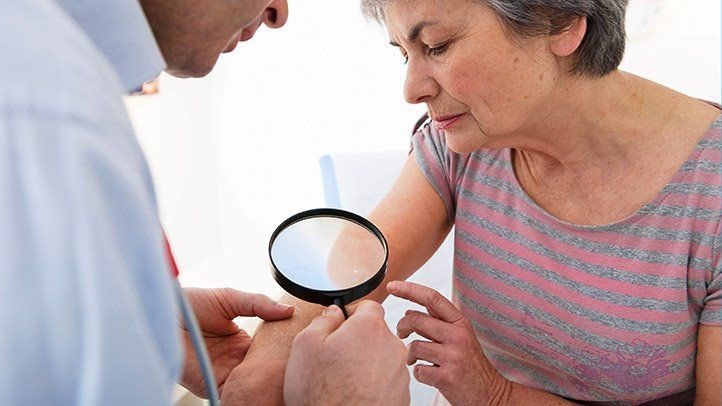Generally, skin cancer is a type of cancer that is very common, and can be very dangerous if left untreated. Therefore, regular skin screening is recommended to help diagnose skin cancer in its initial phases before advancing and developing severe complications. It is easy to manage and treat skin cancer when it is in its early stages. Skin cancer in Glen Allen is hence managed and treated by a team of specialists who are well educated to help detect this type of cancer early.
What is skin cancer?
Skin cancer refers to an abnormal overgrowth of your skin cell that mainly occurs due to sun exposure. Basal cell carcinoma, squamous cell carcinoma, and melanoma are the three common types of skin cancer. According to various specialists, regular skin screening is the best way to detect this condition before it advances and causes several severe complications. During your checkup, the care specialists usually perform full-body screening to help detect any potential skin cancer. These specialists have also studied dermoscopy, which is a skill that involves the use of a dermatoscope to help assess lesions on the skin that might be malignant. Some surgeons are available to treat complicated skin cancers that might be located in very sensitive locations as well as cosmetically concerning places.
What are the symptoms of skin cancer?
Some of the symptoms you are required to watch out for, since they might indicate you have skin cancer, include:
- Squamous cell carcinoma
In most cases, squamous cell carcinoma might look like a scaly and crusted lesion or a firm, red nodule. This lesion or nodule might be found on your face, ears, and other exposed areas of your body, including the arms and legs. They are also led by scaling patches referred to as actinic keratoses.
- Basal cell carcinoma
Basal cell carcinoma is commonly found on the skin that has been exposed to the sun, including your neck and face. It appears like a bleeding scabbed sore, pearly lesion, flesh-colored scar, or waxy bump in most cases.
- Melanoma
It is one of the most dangerous types of skin cancer because it can appear on your skin that has not been exposed to the sun, like the soles of your feet or even the groin. Typically, it seems like a huge mole with dark specks, a bleeding mole that varies in size and color, or a lesion whose border is irregular. It can be pink, red, black, white, or bluish. At times, it can also itch, burn, feel pain, or bleed.
What are the risk factors for skin cancer?
The risk factors of developing skin cancer are: fair skin, excessive exposure to the sun, living in sunny climates, previous history of sunburns, mainly blistering sunburn, previous history of atypical moles, weak immune system, family history of skin cancer, or exposure to toxins or radiations.
How is skin cancer diagnosed?
The clinician evaluates suspicious lesions on your skin using a dermatoscope to help detect skin cancer. Similarly, the clinician also reviews your medical history and symptoms, or collects a skin biopsy for further investigation.
How is skin cancer treated?
Skin cancer treatment varies depending on the type, size, location, and degree of skin involved. Therefore, the treatment options available include curettage and electrodesiccation, excisional surgery, immune-modulating topicals, and Mohs surgery.
If you suspect that you have skin cancer, contact or consult Absolute Dermatology & Skin Cancer Center for early detection and diagnosis. Similarly, various treatment and prevention measures are also offered by experienced specialists. Please book your appointment online or call their offices today for more information.


